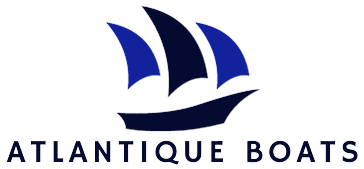Paragraph 1: In an era where the vastness of the oceans no longer guarantees security, it has become imperative for yacht owners to protect their vessels from the growing threat of piracy. With the rise in maritime crime in recent years, the need for effective anti-pirate weapons for yachts has become increasingly urgent. This article aims to delve into the world of these innovative defense mechanisms, exploring the latest technological advancements and providing valuable insights into how yacht owners can safeguard their prized possessions in the face of danger.
Paragraph 2: From Hollywood blockbusters to real-life news stories, piracy has captured the imagination of audiences worldwide. Yet, beyond the realm of entertainment, this criminal activity poses a serious risk to the safety and security of yacht owners and their crew. As pirates become more sophisticated in their tactics, the need for equally sophisticated anti-pirate weapons has become paramount. This article will explore a range of cutting-edge solutions, from non-lethal deterrents to state-of-the-art defense systems, offering a comprehensive overview of the options available to yacht owners who refuse to compromise on the protection of their vessels. Join us as we navigate the intriguing world of anti-pirate weapons for yachts, where innovation meets security on the high seas.
Anti-Pirate Weapons for Yachts
If you own a yacht and are concerned about pirate attacks, there are several anti-pirate weapons that can help enhance your security. Some popular options include:
- Water cannons
- Long-range acoustic devices (LRAD)
- Electric fences
- Non-lethal projectile launchers
These weapons can act as deterrents and provide additional protection for your yacht during potential pirate encounters.
About Anti-Pirate Weapons for Yachts
In today’s world, yacht owners face the increasing risk of piracy attacks while sailing in certain regions. To ensure the safety and security of their vessels and passengers, it is crucial to be equipped with effective anti-pirate weapons. This article will guide you through the various types of weapons available for yachts and provide step-by-step information on how to choose and install them.
Step 1: Understanding the Threat
Before selecting anti-pirate weapons, it is important to understand the common threats and tactics employed by pirates. Pirates often use small boats armed with firearms and other weapons to board and hijack yachts. They may also employ tactics such as surprise attacks, intimidation, and hostage-taking. By familiarizing yourself with these threats, you can better assess your needs and select appropriate weapons.
Once you have identified the risks specific to the areas you plan to sail, it is time to consider the available anti-pirate weapons. The market offers a range of options, each with its own advantages and considerations. Let’s explore some of the most common types of anti-pirate weapons for yachts:
Step 2: Non-Lethal Deterrents
Non-lethal deterrents are designed to repel pirates without causing permanent harm. These weapons focus on disorienting, incapacitating, or discouraging attackers. One popular option is a high-powered water cannon, which can be used to create a powerful stream of water to push away small boats attempting to approach your yacht. Another effective non-lethal option is a sonic deterrent device, which emits high-frequency sounds that disorient and deter pirates.
When selecting non-lethal deterrents, consider factors such as range, ease of use, and compatibility with your yacht’s layout. It is also important to ensure that the chosen deterrents comply with maritime regulations and laws in the regions you plan to sail.
Step 3: Lethal Weapons and Armed Security
In situations where non-lethal deterrents may not be sufficient, some yacht owners opt for lethal weapons and armed security personnel. These measures are more extreme and should be approached with careful consideration and adherence to legal requirements.
Lethal weapons can include firearms, such as shotguns or rifles, for self-defense purposes. However, it is crucial to understand the legal implications and restrictions surrounding the possession and use of firearms on board yachts, as these regulations can vary significantly between countries and regions.
If you choose to employ armed security personnel, ensure that they are properly trained, licensed, and experienced in dealing with piracy threats. Additionally, consult with legal experts to ensure compliance with applicable laws.
Step 4: Installation and Maintenance
Once you have chosen the appropriate anti-pirate weapons for your yacht, it is essential to ensure their proper installation and maintenance. Improper installation can render the weapons ineffective or even pose a threat to the safety of your vessel and crew.
Consult with professionals experienced in maritime security to determine the best locations for weapon placement and ensure that the installations comply with safety regulations. Regular maintenance and inspections are also crucial to ensure the weapons remain in optimal working condition.
Step 5: Training and Preparedness
Equipping your yacht with anti-pirate weapons is only part of the equation. It is equally important to provide proper training to your crew members on how to operate the weapons effectively and safely. This training should cover the use of both lethal and non-lethal deterrents, as well as strategies for responding to potential pirate attacks.
In addition to training, regularly conduct drills and exercises to enhance the crew’s preparedness for piracy threats. This will help ensure a swift and coordinated response in the event of an actual attack.
Step 6: Continuous Evaluation and Updating
Piracy tactics and technologies are constantly evolving. Therefore, it is essential to continuously evaluate the effectiveness of your chosen anti-pirate weapons and stay updated on the latest developments in maritime security.
Regularly review your vessel’s security measures, seek expert advice, and consider upgrading or adding new weapons as needed. Stay informed about piracy incidents in the regions you plan to sail and adjust your security protocols accordingly.
Frequently Asked Questions
Here are some commonly asked questions about anti-pirate weapons for yachts:
Q: What are anti-pirate weapons for yachts?
Anti-pirate weapons for yachts are specialized tools and systems designed to protect yachts and their occupants from pirate attacks. These weapons can include non-lethal deterrents such as long-range acoustic devices (LRADs), water cannons, and electrified fences, as well as lethal options like firearms and anti-aircraft systems. The purpose of these weapons is to deter potential pirates, delay their approach, and, if necessary, repel them with force to ensure the safety and security of the yacht.
It is important to note that the use of firearms and other lethal weapons on yachts is subject to international laws and regulations, and yacht owners must adhere to these guidelines to avoid legal repercussions.
Q: Are anti-pirate weapons legal for yachts?
The legality of anti-pirate weapons for yachts depends on the jurisdiction in which the yacht is registered, as well as the specific weapons in question. While some countries may allow certain types of non-lethal deterrents, the use of lethal weapons like firearms is often heavily regulated.
Yacht owners must thoroughly research and understand the laws and regulations of their yacht’s flag state, as well as the countries they plan to visit, to ensure compliance with local and international laws. It is recommended to consult with legal experts and maritime security professionals to ensure the proper and legal use of anti-pirate weapons on yachts.
Q: What non-lethal anti-pirate weapons are available for yachts?
Non-lethal anti-pirate weapons for yachts offer effective deterrents without causing permanent harm to potential attackers. Some common non-lethal options include:
– Long-range acoustic devices (LRADs): These devices emit a high-pitched sound that can disorient and deter pirates from approaching the yacht.
– Water cannons: High-pressure water jets can be used to push pirates away from the yacht and make boarding difficult.
– Electrified fences: These fences deliver a non-lethal electric shock to anyone attempting to climb or breach the yacht’s perimeter.
It is important to note that the use of non-lethal weapons should always prioritize the safety and well-being of both the yacht’s occupants and potential attackers.
Q: What considerations should be made when using anti-pirate weapons on yachts?
The use of anti-pirate weapons on yachts requires careful consideration and planning. Some important factors to consider include:
– Compliance with laws and regulations: Yacht owners must ensure that the use of anti-pirate weapons aligns with international and local laws to avoid legal consequences.
– Crew training and readiness: Proper training should be provided to the yacht’s crew to ensure they can effectively and safely operate the anti-pirate weapons in case of an attack.
– Rules of engagement: Clear rules of engagement should be established to guide the crew on when and how to use the weapons, ensuring a proportional response to any threat.
– Communication and coordination: Effective communication and coordination among the crew members, as well as with relevant authorities, are crucial to maximize the effectiveness of anti-pirate weapons.
Q: Are there any alternatives to using anti-pirate weapons on yachts?
While anti-pirate weapons can be effective in deterring and repelling pirate attacks, there are alternative measures yacht owners can take to enhance security:
– Security personnel: Hiring trained security personnel, such as armed guards or former military personnel, can provide an added layer of protection and expertise in dealing with potential threats.
– Security protocols and procedures: Implementing robust security protocols, including secure access control, surveillance systems, and emergency response plans, can help mitigate the risk of pirate attacks.
– Safe routes and areas: Planning yacht routes to avoid high-risk areas and staying in well-patrolled waters can reduce the likelihood of encountering pirates.
Ultimately, the choice of using anti-pirate weapons or alternative security measures depends on the individual yacht owner’s risk assessment and preferences.
In conclusion, the development of anti-pirate weapons for yachts presents a promising solution to the growing concern of piracy in our oceans. As maritime security becomes a critical issue, yacht owners and manufacturers are taking proactive measures to protect their vessels and the lives of those on board. The evolution of these innovative weapons, such as non-lethal deterrent systems and advanced surveillance technologies, not only enhances the safety of yacht owners and crew members but also sends a strong message to potential pirates that their criminal activities will not be tolerated.
Furthermore, the implementation of anti-pirate weapons for yachts is not just about protecting individual vessels, but it is also about safeguarding the freedom of navigation and ensuring the security of our global maritime routes. By investing in these state-of-the-art technologies, yacht owners are contributing to the collective effort in combating piracy and supporting international naval operations. Moreover, the development of anti-pirate weapons is a testament to human ingenuity and adaptability in the face of evolving threats. It demonstrates our unwavering commitment to maintaining peace and stability in our oceans, and serves as a reminder that the safety of maritime activities should never be compromised.
In conclusion, the advancements in anti-pirate weapons for yachts provide a beacon of hope in the battle against piracy. As technology continues to evolve, we can expect further innovations that will bolster the security of yachts and deter pirates from targeting these vulnerable vessels. It is crucial that we continue to support the development and implementation of these weapons, as they not only protect individual yacht owners but also contribute to the overall safety and stability of our global maritime community.


















